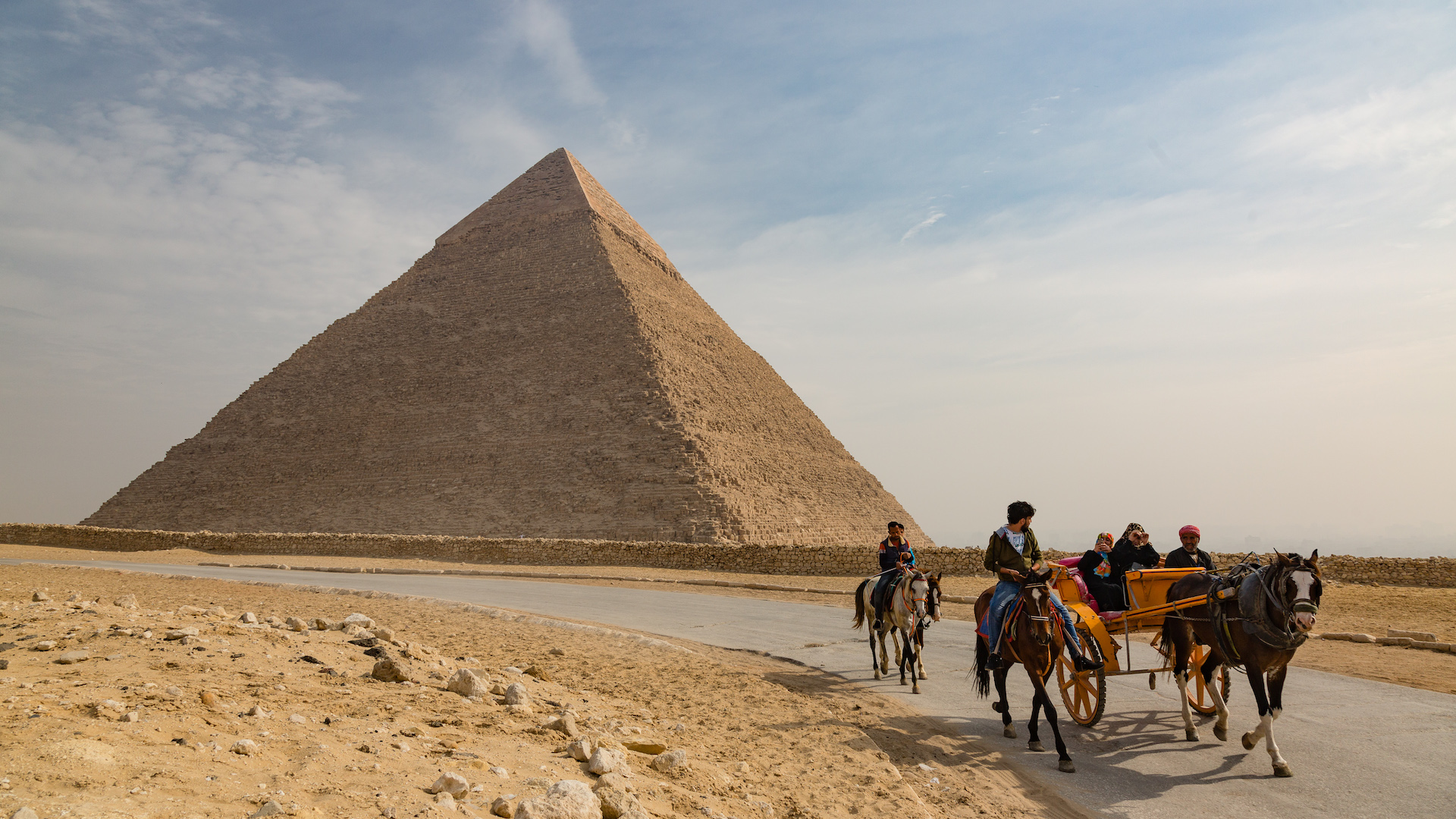
We in the West tend to keep the subject of death at an arm’s distance—out of sight, out of mind. Only deal with the reality of it when a loved one passes and a eulogy needs to be written.
Not the ancient Egyptians. They were fascinated with death.
The Tourist Attractions Were Actually Tombs
In the Fourth Dynasty, around 2600 BC, Egyptian pharaohs had so much concern for the afterlife that they dedicated the entire economy of their empire to building a giant funerary complex. They spent decades constructing giant, megalithic structures—the pyramids—to ensure safe passage into the spirit world for the pharaoh and his family.
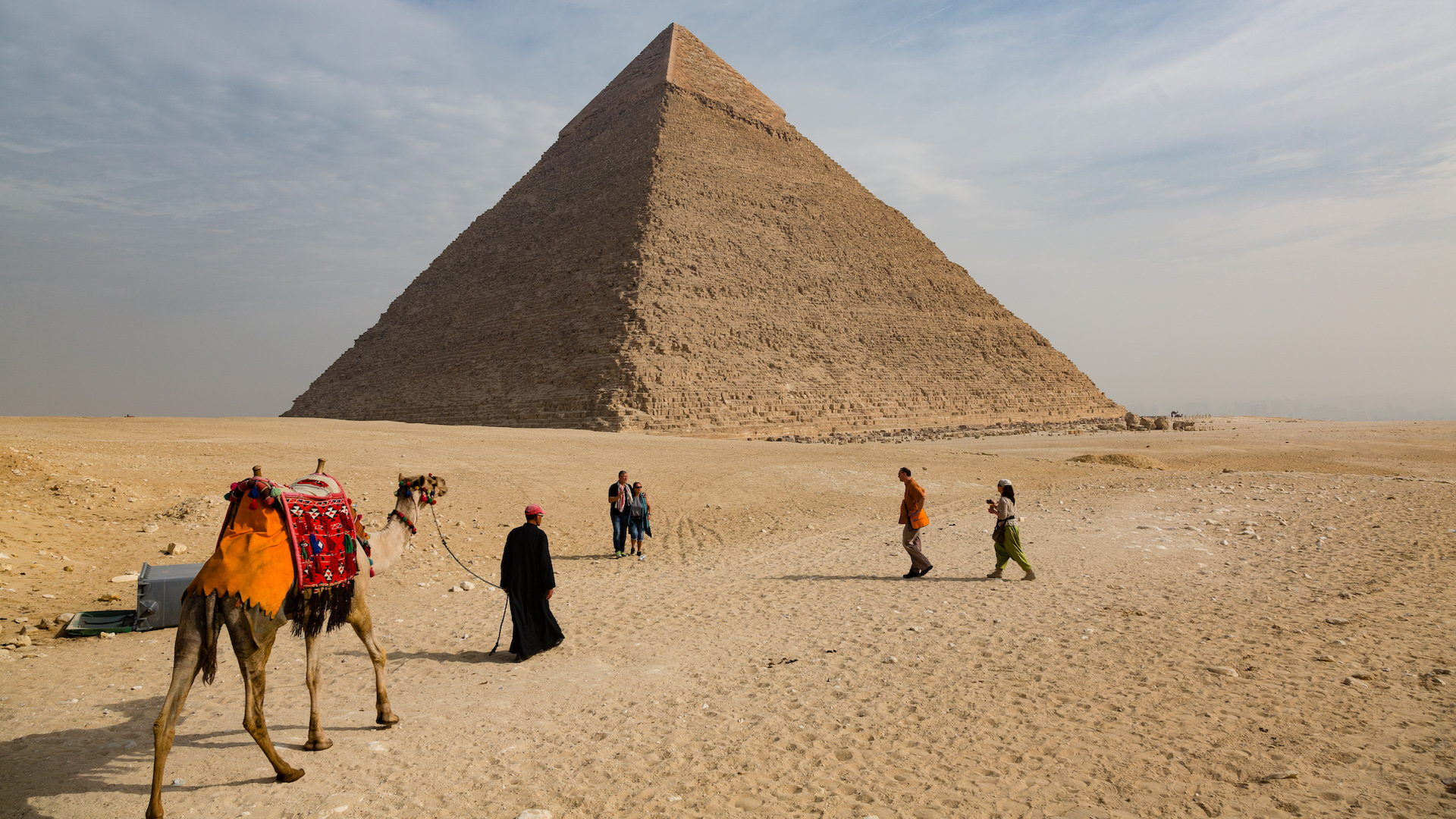
Tourists visit one of the world famous pyramids of Giza in Egypt. These structures once housed the graves of mummified pharaohs and their family. Although most bodies have been removed for research, some people believe there remain mummies yet to be discovered within the pyramid. Photo by Max Power.
Egyptians in this era believed there was just the promise of life eternal. No heaven or hell, just life for your spirit—your ka— upon the death of your physical body. The ka was said to leave the body at death but could return at will for a visit. Preparations helped the deceased’s ka have a longer, better life in the next realm. When an Egyptian died, embalmers spent weeks preparing each body for the afterlife.
Since the ka was kept alive by food and drink in this life, people were buried with food and drinks to support their ka in the afterlife. Many bodies were also buried with clothes and weapons, should the ka find them useful. Elaborate masks and coffins were designed to be as realistic as possible so the ka could find the body again each night after wandering away during each day. The last words in the embalming ceremony were, “You are alive; you are alive forever. Behold, you are young again and forever!”
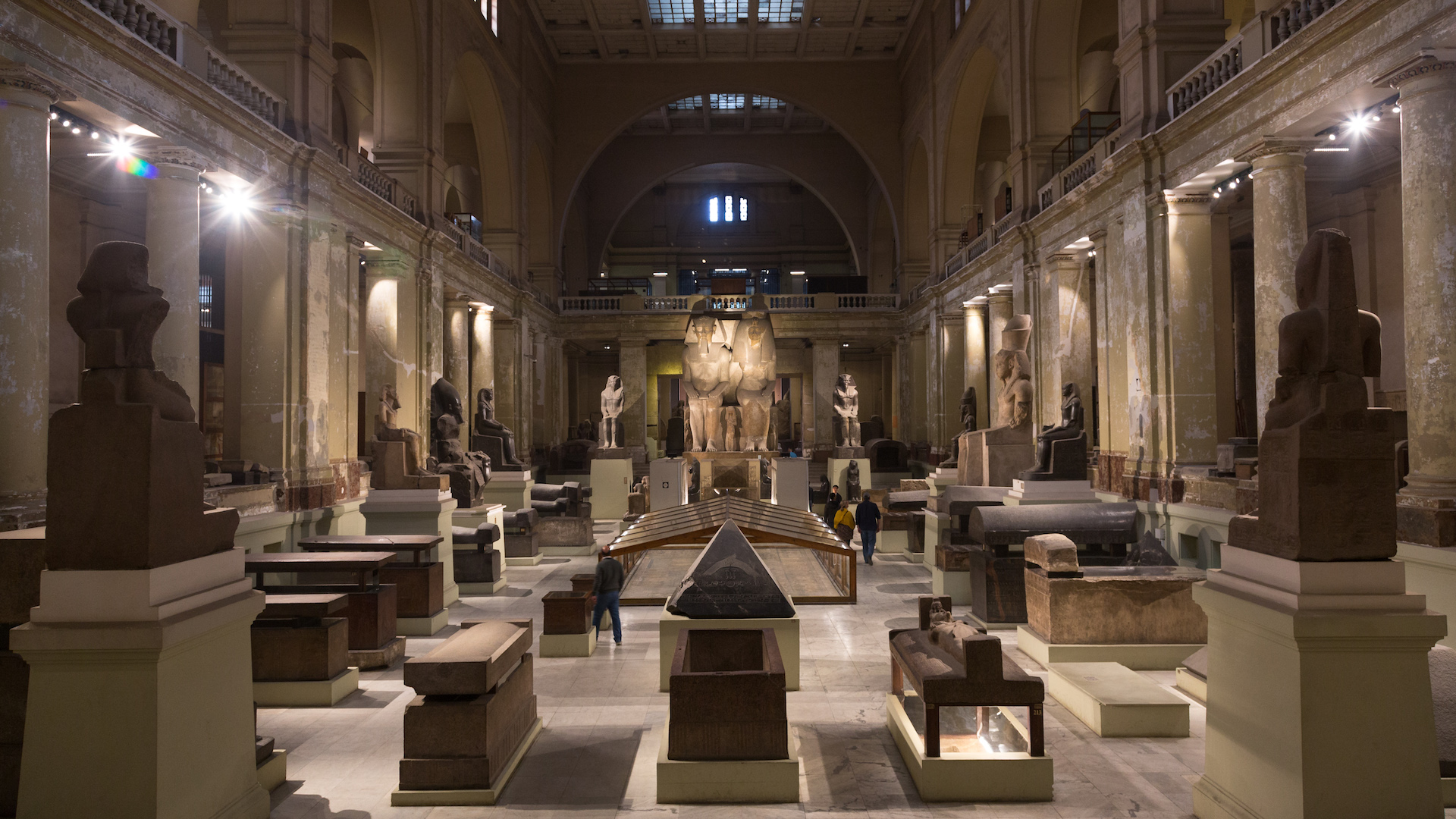
The grand hall of the Egyptian Museum of Cairo, Egypt is full of massive sarcophagi and monuments from Egypt’s rich, ancient history. Photo by Max Power.
Although the pharaoh was privileged to have a massive complex of temples and tombs for his body to be buried in, common people were buried in simple graves at the edge of the desert. Many ordinary laborers were mummified to preserve their bodies and were buried with provisions to keep their ka alive after it was separated from the body. Even bodies that were not mummified were often well-preserved by being buried in the dry sands of the Sahara.
Those who could afford it would even set up a type of endowment so that a priest and his descendants would periodically bring more food and drink to sustain the ka forever. This is one of the rare customs that has been passed down to modern Egyptians, as they bring food and drinks to be consumed on site at the burial places of relatives while the Qur’an is recited.
The Gospel’s Impact on the Afterlife
As the time of Christ drew near, the Egyptian view of death evolved. Concepts of judgment and punishment in the afterlife developed. The idea that the heart and its good deeds would be weighed on a scale was incorporated into their theology during the New Kingdom era, after the 1500s BC.
After the fall of Cleopatra around 30 BC, Egypt was ruled as a province of the Roman Empire. Tradition states that Mark, the evangelist and author of his eponymous gospel, brought the message of Jesus to Egypt. For the next six centuries, Christianity flourished in Egypt as the worship of pagan gods and traditional funeral practices diminished.
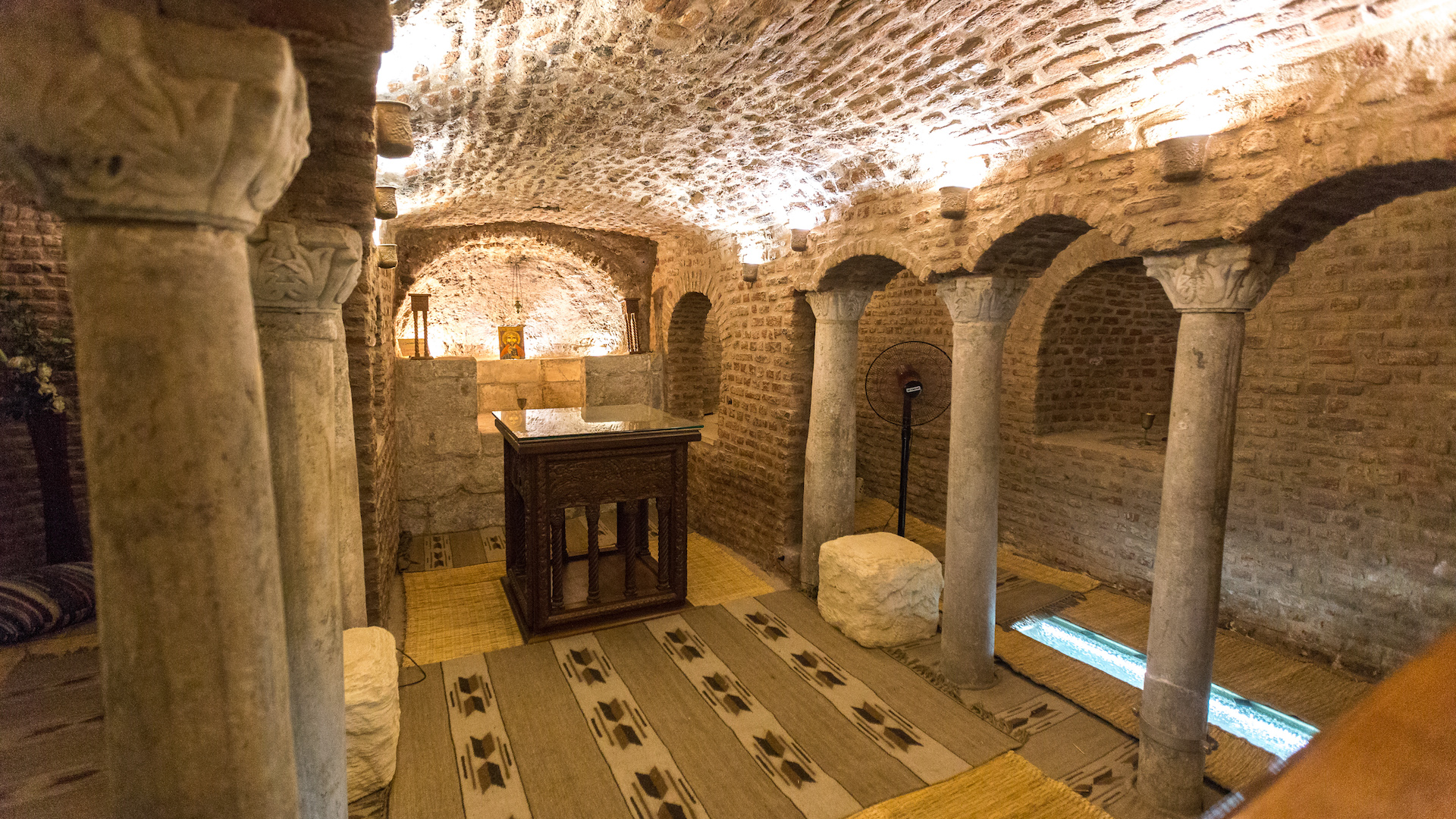
Saints Sergius and Bacchus Church, also known as Abu Serga, in Coptic Cairo is one of the oldest Coptic churches in Egypt, dating back to the fourth century. Beneath the church is a cavern where Copts believe Mary, Joseph, and Jesus stayed for three months during their flight to Egypt. Photo by Max Power.
As Christianity grew, so did a common desire to shed earthly things for the sake of keeping an eye on eternity. A biblical understanding of eternity led Egyptians to dismiss how they meticulously prepared their bodies for eternity in favor of preparing their souls. In the 300s, devout followers of Christ began giving up all of their material possessions to live an ascetic lifestyle in the desert. They started by living among the tombs as individual hermits. Some of the ancient pharaonic temples were even repurposed for monastic life.
The Entrance of Islam
When Amr ibn al-As brought Islam to Egypt around 640 AD, he found a predominantly Christian people settled up and down the Nile. The pagan temples of the Egyptian and Greek eras had largely been abandoned. Although Christians and Muslims lived peaceably, the religion of Mohammed gradually came to dominate the entire region, and once again views on death and the afterlife shifted and closely mirrored what it is today.
Nine out of ten Egyptians today are Muslim. Orthodox Islam teaches that a Muslim’s good deeds and religious acts will be weighed against their sins. Upon death, they will either be punished to make up any deficits or rewarded for their good works.
Many Muslims work hard to follow the commands of Allah as presented in the Qur’an, hoping to improve their eternal rewards in the afterlife. However, many modern Egyptians will also say they are simply trusting in the mercy of God. They don’t have as much fear of death as they have resignation to God’s predetermined will for their lives.
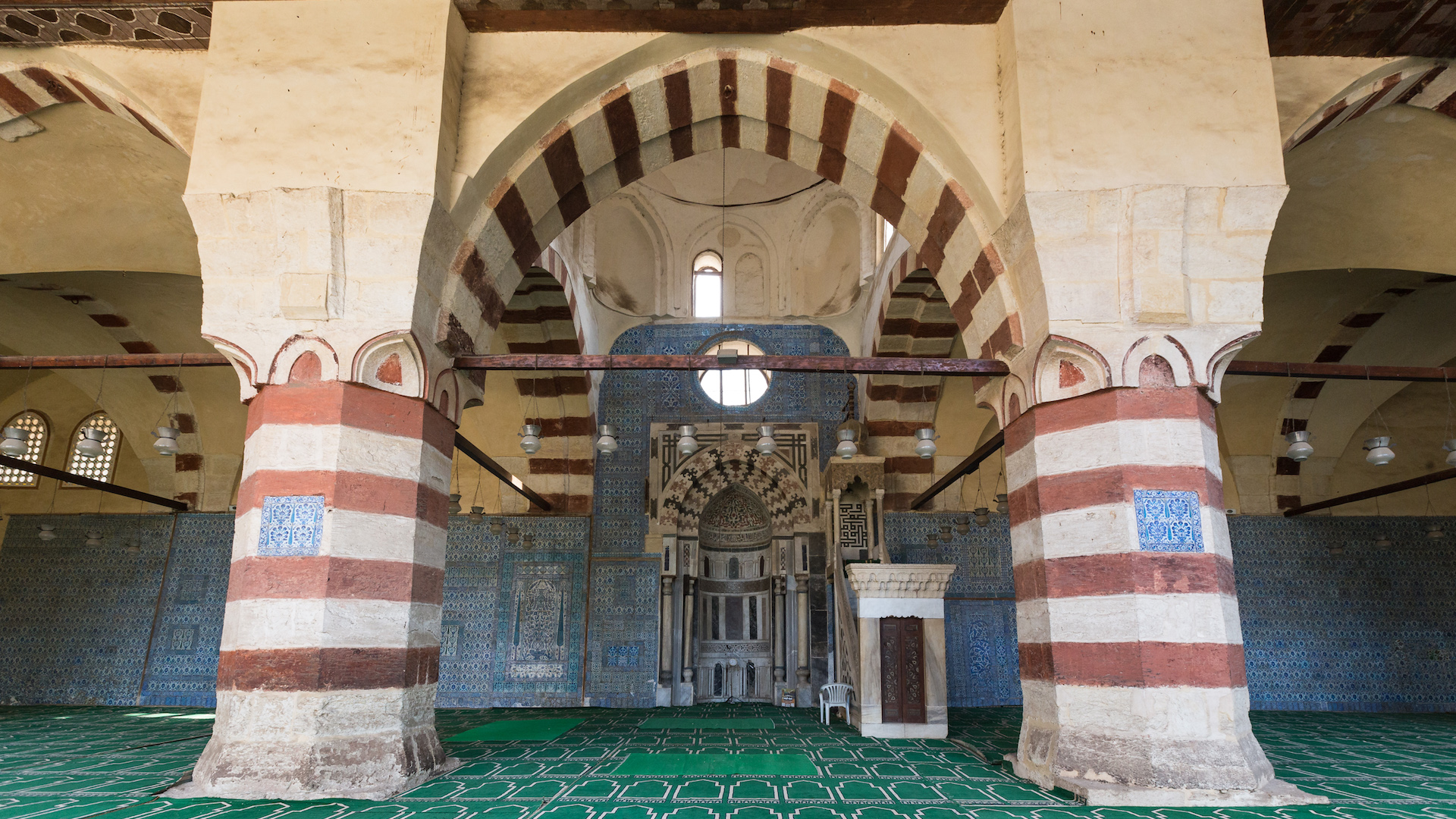
The Aqsunqur Mosque, otherwise known as the Blue Mosque, also serves as a funerary complex, containing the mausoleums of its founder Shams ad-Din Aqsunqur, his sons, a number of children of the Bahri Mamluk sultan an-Nasir Muhammad and that of its principal restorer, Ibrahim Agha al-Mustahfizan. Photo by Max Power.
In orthodox Islam, embalming a body and building fancy burial monuments are forbidden. However, when Islam came to Egypt, Muslims encountered a much older tradition that was not easily cast aside. In many of the dynasties and empires of Muslim rule, a sort of loophole in the system was found. Although Muslims weren’t permitted to build monuments for the sole purpose of commemorating the deceased sultan, they were permitted to build establishments that were a benefit to the community and then insert the leader’s burial place into that. Today there are mosques, schools, and hospitals that serve a community purpose but also house the remains of some of the great leaders of the past.
And so continues the ancient tradition in Egypt of living on earth with an eye toward eternity. From the ancient pagan traditions, through a deep Christian era and into the modern Muslim faith, Egyptians have always been mindful that death is not the end. Our prayer today is that modern Egyptians will return to that brief moment when they saw Jesus as the only Savior.
Andrew Dobson lives and works in the Middle East and has made many trips into Egypt, learning about the culture and sharing the good news with those he meets.

